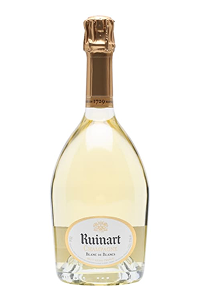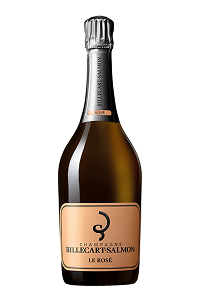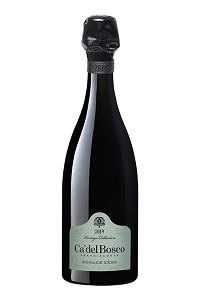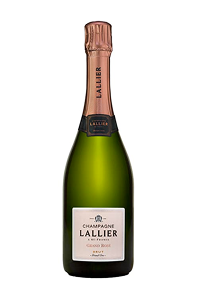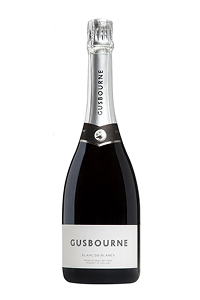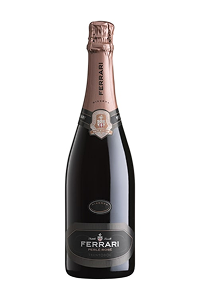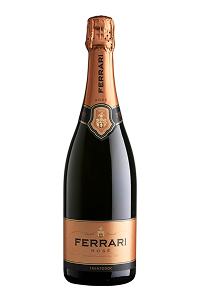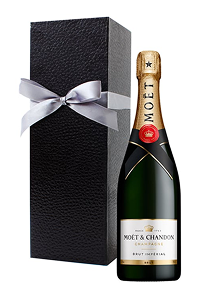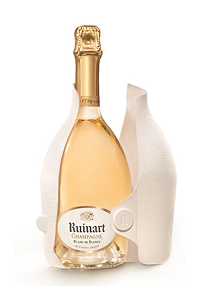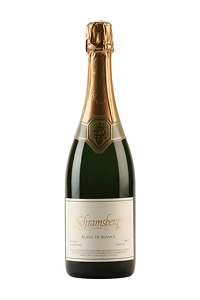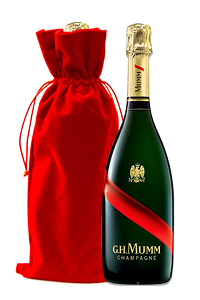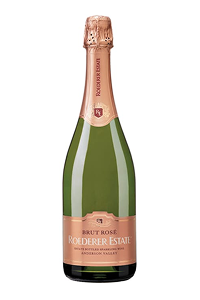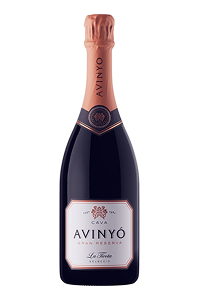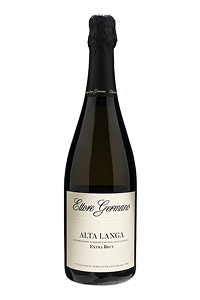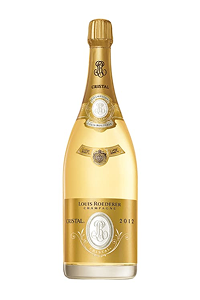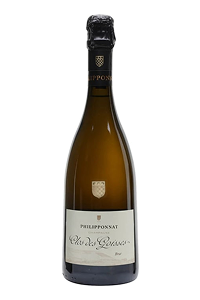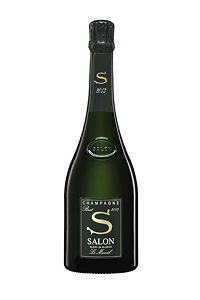Sparkling wine: top bubbles to try in 2025
Sparkling wine is loved for its freshness and versatility. In this guide, we’ll help you discover the best sparkling wine for this year’s celebrations , along with popular brands, food pairings and tasting notes.
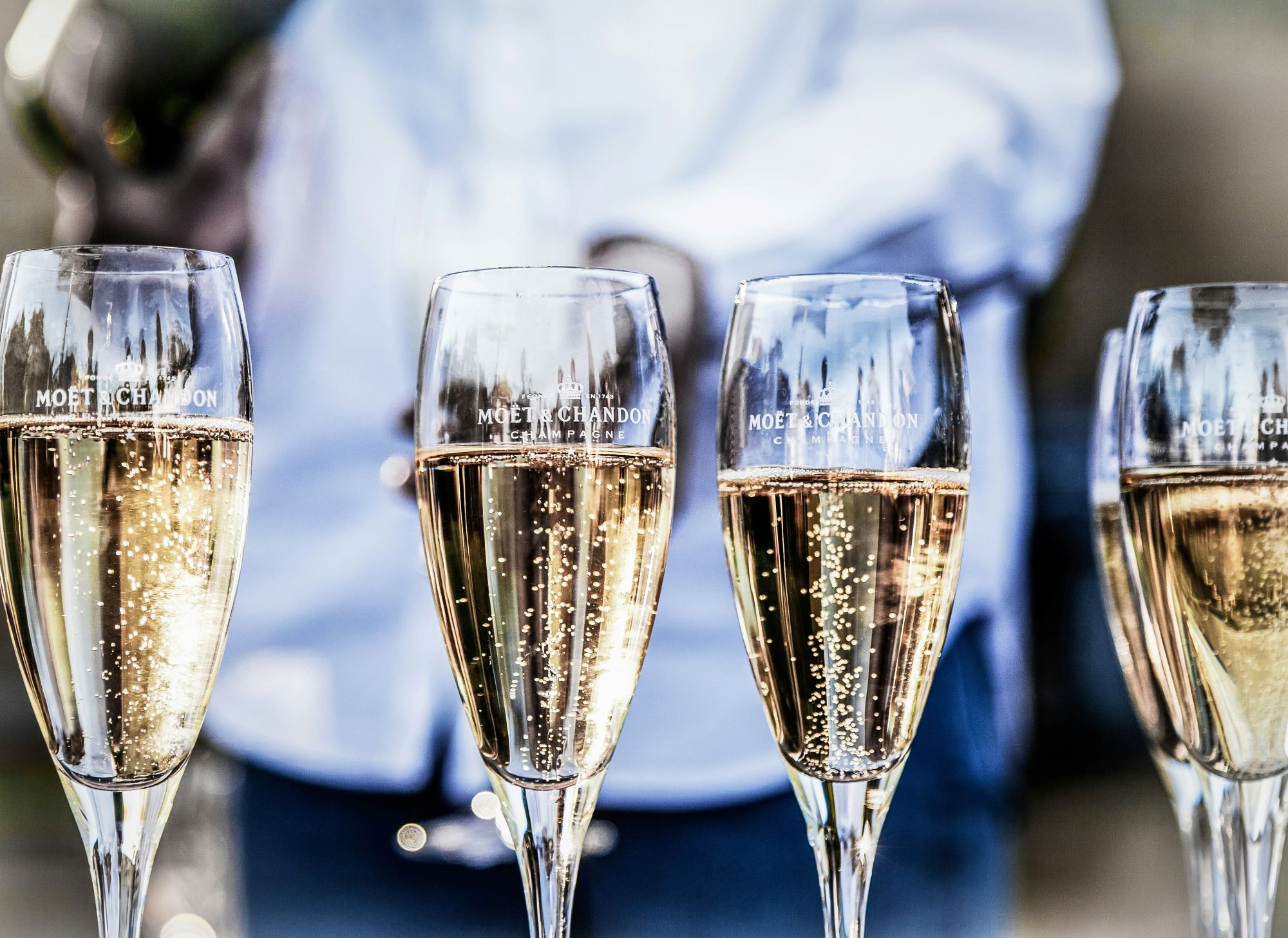
By
Last updated:
Table of Contents
10 Best sparkling wine bottles to buy online
Ruinart Brut Blanc de Blancs 2012
France
Le Rosé Champagne – Billecart-Salmon
France
Ca’ del Bosco Dosage Zero Brut 2019
Italy
Lallier Grand Rose Brut
France
Gusbourne Blanc de Blancs 2019
England
Ferrari Perle Rose 2017
Italy
Pol Roger Brut Reserve
France
Moet & Chandon Imperial Brut Pharrell Williams Special Edition (Blue) with Gift Box
France
Chandon Etoile Brut
California
Ferrari Brut Rose – Ferrari
Italy
Our list of 10 best sparkling wines were chosen for their taste, balance and popularity among critics. While expert ratings played a key role in our selection, we also considered which were the most popular sparkling wines amongst consumers, drawing on feedback from customer reviews to ensure that our listings reflect genuine customer experience.
Popular sparkling wine brands worth knowing
When choosing good sparkling wines, a handful of producers stand out for prestige and for how they have shaped the global wine culture. Each estate carries a unique history and a flagship bottle that carries their style. Here are the most popular sparkling wine brands every wine lover should know:
Moët & Chandon is perhaps the most famous sparkling wine brand in the world, known for bringing Champagne to the global stage. Founded by Claude Moët in 174, the house has vast vineyard holdings and centuries of know-how. Currently part of the LVMH luxury Group, the house has perfected consistency and approachability across its range. The iconic Moët Impérial Brut remains the best expression of its house style: a fresh, balanced, and celebratory bottle that has been raised in toasts worldwide for generations.
Moet & Chandon Imperial Brut with Black Gift Box
Ruinart (France), founded in 1729, is the oldest and most revered Champagne house. The house is a master of Chardonnay driven cuvées with their Blanc de Blancs being priced and sought after worldwide. The signature sparkling wines of Ruinart are elegant and mineral driven with luminous freshness and finesse. Try one their 100% Chardonnay bruts to appreciate fully Ruinart’s mastery and elegance:
Ruinart Brut Blanc de Blancs (Second Skin Gift Wrapped Bottle)
Schramsberg Vineyards (California): founded in 1965 in Calistoga (Napa Valley) Schramsberg is widely regarded as the pioneer of Californian sparkling wines crafted according to the traditional method. Jack and Jamie Davies revived an abandoned 19th century estate abandoned by German immigrant Jacob Schram with the vision of crafting great sparkling wines that could rival Champagne. The couple’s bold move paid off: Schramsberg became the first American winery to produce a Blanc de Blancs (100% Chardonnay) using the traditional method, rising international fame in 1972 when president Richard Nixon served their Blanc de Blancs at the “Toast to Peace” with China’s then premier Zhou Enlai.
Schramsberg Blanc de Blancs 2022
Ferrari (Italy). Founded in 1902 in Trentino, Ferrari pioneered metodo classico (aka classic method) sparkling wines in Italy long before Franciacorta became famous. Frerrari’s sparkling wines are fresh and mineral, with very fine and elegant bubbles. Its vineyards are planted high in the Dolomite Alps strongly influencing the herbal character of its bottlings. The Ferrari Perle Brut is one the estate’s flagship bottle, a Chardonnay based bubbly wine that captures the elegance of mountain terroir and has become Italy’s answer to Champagne in prestige and quality.
Ferrari Perlé 2017
What is sparkling wine and how is it made?
Sparkling wine is a style of wine that contains bubbles of carbon dioxide, which can be naturally produced through fermentation or added artificially during production. Unlike still wines, sparkling wines undergo a secondary fermentation, in bottles or large tanks according to the production method. The main production methods to craft sparkling wines are:
- Traditional method (or méthode champenoise) where the secondary fermentation occurs in the bottle, resulting in fine bubbles and complex flavors (for top rated sparkling wines, including Champagne ).
- Charmat method: in this scenario, the secondary fermentation takes place in pressurized tanks, which gives the wine a fresh and fruity flavor (think Prosecco style wines).
- Ancestral method (known also as pétillant naturel or pét nat): this is the oldest sparkling wine technique. Fermentation begins in a tank but is interrupted before all the sugars convert into alcohol. The still fermenting wine is then transferred in the bottle where fermentation continues naturally, creating a rustic and authentic wine.
- Artificial carbonation: CO₂ is directly added producing immediate bubbles, like in carbonated soda, but they are generally lager and dissipate quickly. It is the least expensive method, often used for fast and mass market wines.
Main sparkling wine grape varieties
The choice of grape variety plays a fundamental role in defining the aroma and aging potential of sparkling wines. Here are the sparkline wine grapes most commonly used by winemakers around the world:
- Chardonnay is a versatile white grape known for producing wines that can be crisp and citrusy or rich and buttery. It is often used for oaked sparkling wines.
- Pinot Noir, despite being a black skinned grape, stands out among the world’s most captivating grapes also for white sparkling and rosé wines. Thanks to its red fruit aromas and an elegance that never overwhelms, it is very versatile in a wide range of sparkling wines (including Champagne).
- Pinot Meunier: is a fruity grape commonly used alone or in Champagne blends to add roundness and approachability.
- Glera is celebrated as the white grape behind Prosecco, with a fresh and floral character that produces lively bubbles.
- Lambrusco is capable of producing sparkling wines ranging from dry to slightly sweet, characterized by lively fruity notes.
- Moscato is the grape used to make sweet and low alcohol wines with flavors of peach and apricot.
Heads up: a crucial element to monitor during the production of sparkling wines is accidental fermentation, which can compromise the wine’s stability if not controlled carefully by the winemaker!
What are the types of sparkling wine?
Sparkling wine types vary according to their method of production, the grape varieties used, the region of origin and even the residual sugar left in the wine. Aside from the sparkle, the main factors that distinguish one sparkling wine style from another include:
- Body: is the impression of weight and fullness the wine creates in the mouth. It is shaped by its alcohol level, tannins, sugar and overall texture, varying from light and refreshing to full bodied with depth.
- Sweetness / dryness level: indicates the amount of residual sugar left after fermentation and how perceptible it is on the palate. A dry sparkling wine has little to no detectable sugar while a sweet sparkling wine retains noticeable sugar that brings roundness and richness.
- Aromatic profile: refers to the range and intensity of scents perceived through the nose and retronasal sensations. It depends much on the grape, terroir and on the production method used, with fresher versions having notes of citrus, green apples and white flowers or richer versions with notes of brioche, roasted nuts, berries or dark fruits.
- Production style: refers to the set of techniques and decisions made during viticulture and winemaking that shape its final character of a sparkling wine. It includes choices such as fermentation method, use of oak or stainless steel, length of aging and blending practices, all of which influence the wine’s structure and flavor profile.
Recognizing these distinctions helps wine lovers understand why no two sparkling wines are ever quite the same and provides a framework for exploring them with more confidence.
Sparkling wine by body
It’s true that terms like “light body” or “full body” are more often linked to still wines but they can also apply to sparkling wines when describing mouthfeel and texture:
- Light bodied sparkling wines are the kind of bubbles that make your palate feel fresh and zesty.
- Medium bodied sparkling wines instead are more balanced and offer a sweeter flavor.
- Full bodied sparkling wines are the most structured wines, with different layers of flavor that make them a little more complex.
The table below offers examples for each style for a better understanding.
| Body Type | Winemakers | Grape Varieties | Structure & Flavor |
|---|---|---|---|
| Light bodied | Villa Jolanda, Lieb Cellars, Lamarca | Glera, Moscato Bianco, Pinot Blanc, Chenin Blanc | Crisp with high acidity and flavors of green apple and white flowers |
| Medium bodied | Stella Rosa sparkling wine, Kornell, Argyle, Taittinger | Macabeo, Pinot Noir, Chardonnay, | Balanced with fine mousse and notes of stone fruit, citrus and almond |
| Full bodied | Freixenet sparkling wine, Champagne Bollinger, Louis Roederer | Chardonnay, Pinot Noir, Pinot Meunier | Rich and creamy texture with persistent bubbles and notes of brioche and aged fruit |
Sparkling wines by sweetness
Sparkling wines present four main sweetness levels with some subcategories that cover “in between” styles:
- Sweet sparkling wines are the most indulgent style; with over 0.85 oz residual sugar per bottle they offer lush fruity aromas and velvety texture.
- Semi dry (also demi sec), with residual sugar ranging between 0.45 and 0.85 oz per bottle, this style carries noticeable sweetness but retains enough freshness to stay balanced.
- Dry / extra dry: despite the name, dry and extra dry sparkling wines are not the driest types. Retaining residual sugar between 0.32 and 0.45 oz per bottle, dry and extra dry sparking wine has a very lively and approachable character, making it a crowd pleaser.
- Brut / extra brut / brut nature: these are usually the best sparkling wine styles. They retain little to no residual sugar (about 0 to 0.32 oz per bottle) resulting in bright acidity, mineral notes and a clean and refreshing finish.
| Sweetness | Best Sparkling Wine | Common Varietals |
|---|---|---|
| Sweet over 0.85 oz/bottle |
Victoria Pink Moscato 2015 by Innocent Bystander | Moscato, Brachetto, Riesling |
| Semi Dry 0.45 – 0.85 oz/bottle |
Moët & Chandon Nectar Imperial Demi Sec | Chardonnay, Pinot Noir, Pinot Meunier |
| Dry 0.32 – 0.45 oz/bottle |
Valdobbiadene L’Ovest Prosecco Superiore Extra Dry by Sorelle Bronca | Chardonnay, Pinot Noir, Chenin Blanc |
| Brut 0 – 0.32 oz/bottle |
La Grande Année Brut 2008 by Champagne Bollinger | Riesling, Chardonnay, Pinot Meunier |
Spotlight on brut sparkling wine
Brut sparkling wines include some of the most recognized categories worldwide: Champagne (France), Crémant (France outside Champagne), Franciacorta (Italy), Cava (Spain) and California Bruts (USA). Most are made using the traditional method used for Champagne where the secondary fermentation occurs in the bottle giving complexity and fine bubbles. Others, such as many Prosecco Bruts, use the Charmat method with secondary fermentation occurring in pressurized tanks, resulting in a fresher and fruitier style. Here’s a selection of the best bubbly wine in the brut category:
G.H. Mumm Brut Grand Cordon with Red Velvet Gift Bag – France
Ca’ del Bosco Franciacorta Cuvée Prestige Edizione 47 – Italy
Roeder Estate Brut Rose – California
Avinyo La Ticota Gran Reserva Brut Nature Cava 2016 – Spain
Sweet sparkling wine: the perfect companion for dessert
Sweet sparkling wine is often made using the traditional method, which helps bring out the fruity and floral notes of the grapes. Sweet styles like Demi Sec and Doux account for 14% of the world’s sparkling wine production!
| Sweet Sparkling Wine | Best Winemakers | Tasting Notes |
|---|---|---|
| Victoria Pink Moscato 2015 | Innocent Bystander | Heady aromas of red berries, tangerine and floral hints, sharpened by a lively, tangy acidity. |
| Nivole Moscato d’Asti 2003 | Michele Chiarlo | Intense notes of musk, black locust and orange flowers |
| Rosa Regale Brachetto d’Acqui Rose | Castello Banfi | Aromatic with hints of raspberries, strawberries and rose petals |
| Roscato Rosso | Cantine Roscato | Ripe blackberries and wild berries |
Under rated dry sparkling wines
Dry sparkling wines are usually called ‘Brut’, ‘Extra Brut’ or ‘Brut Nature’ and present very low levels of residual sugar to emphasize freshness, structure and minerality over sweetness. Despite Champagne holding the highest spot, Italy’s Franciacorta fiercely rivals Champagne for taste profile, aging capacity and layers of complexity. Spain (with Cava), California and Australia produce excellent bottles with remarkable depth and food friendliness at a fraction of Champagne’s price. Here are some of the most popular under rated dry sparkling wine choices that pair great with food, especially at weddings or other special occasions.
Alta Langa Extra Brut – Ettore Germano, Italy
Russian Couvée 2019 – Iron Horse, California
Franciacorta Anna Maria Clementi Riserva 2015 – Ca’ del Bosco 2015, Italy
Mosel Riesling Brut Sekt 2019 – Maximin Grunhaus, Germany
Pro tips for great sparkling wine food pairings
The key to a great sparkling wine food pairing is balancing flavors: lighter sparkling wines enhance delicate dishes, more structured bubbles stand up to richer flavors. Sparkling wines are surprisingly versatile and pair beautifully with a wide range of foods, even some unexpected ones!
Below you’ll find easy and practical tips on the best food to pair with sparkling wine.
| Food | TOP Sparkling Wine | Grape Variety | Type & Structure |
|---|---|---|---|
| Seafood Appetizers, Vegetable Tempura | Franciacorta Brut – Contadi Castaldi | Chardonnay, Pinot Noir, Pinot Blanc | Dry, full bodied, citrus |
| Bruschetta, Fish Salads, Sushi Rolls | Rustico Valdobbiadene Prosecco Superiore – Nino Franco | Glera | Dry, light bodied, fruity |
| Fresh Oysters, Caviar, Aged Cheese | Champagne Brut – Veuve Clicquot | Pinot Noir, Chardonnay | Dry, medium bodied, toasty notes |
| Cured Meats, Cold Meats, Pizza, Flatbreads | Lambrusco di Sorbara Vecchia Modena- Cleto Chiarli | Lambrusco | Slightly sweet, light bodied, fruity |
| Tapas, Grilled Fish, Semi-aged Cheese | Cordon Negro Cava Brut – Freixenet | Macabeo, Xarel·lo, Parellada | Dry, medium-bodied, balanced |
| Summer Salads, Mild Asian Cuisine | Roederer Estate Brut | Chardonnay, Pinot Noir | Medium bodied, fresh, crisp acidity |
| Turkey, Duck, Grilled Salmon, Fruit-based Desserts | Brut Rosé – Schramsberg | Pinot Noir | Dry, medium bodied, fruity |
| Spicy Dishes, White Meats | Riesling Extra Brut Sekt – Vin Winning | Riesling | Extra dry, light bodied, fruity |
Sparkling wine varieties explained
Sparkling wine varieties encompass a wide range of styles influenced mainly by the grape varieties used, production methods and the level of carbon dioxide in the bottle: wines like Champagne and Franciacorta showcase fine, persistent bubbles while sparkling wines like Prosecco or Cava feel lighter and fresher. Let’s see in detail the varieties and styles:
Most popular sparkling wines amongst collectors
Certain sparkling wines and labels have earned legendary status worldwide becoming so valued that they are now viewed as true investment assets. Below we have grouped and explained the most popular sparkling wines amongst fine collectors (including luxury couvées and exclusive editions), chosen for their rarity, prestige and impeccable craftsmanship. Read on to find out why each of them is so highly valued and worth the investment.
1. Armand de Brignac Ace of Spades Silver Blanc de Blancs
2. Louis Roederer Cristal Brut (1.5 L Magnum) 2012
3. Philipponnat Clos des Goisses Extra Brut 2014
4. Salon Blanc de Blancs Le Mesnil 2013 – France
Beyond the luxury and exclusive edition bottles highlighted above, there are broader factors that make good sparkling wines highly collectible. Rarity plays a central role, with limited vintage releases driving demand among collectors. Winemaking techniques also matter: wines crafted using the traditional méthode champenoise are often more expensive and achieve greater refinement. Equally important is the terroir: the soil, the temperature and the location of the vineyards shape the character of sparkling wines, influencing the availability and distinctiveness of each release.
Fun fact: the world’s most expensive sparkling wine is the Goût de Diamants Champagne; it comes in a white gold bottle adorned with a 19 carat diamond, priced at around $1.5 million. A true collector’s treasure!
Sparkling wine serving temperature: tips you need to know
Wine bottles are the life of the party but there’s one simple thing that makes a big difference on how they taste: how cold you serve them! Getting the right sparkling wine serving temperature helps it taste fresh and show all its flavors.
Pro tip: acidity, aging potential and the sparkling wine alcohol content shape the wine’s profile influencing its optimal serving temperature. The table below offers a handy guide on how to serve different sparkling wines based on ABV, acidity and serving temp.
| Top Sparkling Wine | Tannin / Acidity | Serving Temp | Aging Potential |
|---|---|---|---|
| Ice Imperial – Moët & Chandon – ABV 12,5% | Low tannin, medium acidity | 43-46° F | 2-4 years |
| Christophe Mittnacht Cremant d’Alsace Extra Brut – ABV 12,5% | Low tannin, high acidity | 46-50° F | 3-5 years |
| Cava Brut Excelencia Kosher – Freixenet – ABV 12% | Low tannin, medium acidity | 41-46° F | 2-5 years |
| Franciacorta Cuvee Saten Brut – Monogram – ABV 12,5% | Low tannin, medium-high acidity | 39-42° F | 5-8 years |
| Prosecco DOC – La Marca – ABV 11,2% | Low tannin, high acidity | 43-47°F | 1-3 years |
| Brut Reserve – Coates and Seely – ABV 12% | Low tannin, medium acidity | 46-50°F | 3-6 years |
| Grand Siècle No. 25 – Laurent-Perrier – ABV 12% | Low tannin, medium acidity | 50-53° F | 7-12 years |
| J. Schram Blancs 2015 – Schramsberg Vineyard – ABV 12,4% | Low tannin, medium acidity | 46-50°F | 5-10 years |
How to store sparkling wine?
When it comes to sparkling wines, storing becomes even more crucial to protect the delicate bubbles and keep that fresh character intact. How to store sparkling wine the right way? Here are 4 simple tips:
- Store it cool, maintaining a steady temperature between 45 and 55°F to protect its taste and effervescence.
- Keep it dark and shield your wine from light and UV rays which can degrade its aromas and character.
- Store bottles horizontally to keep the cork moist and ensure an airtight seal to preserve the bubbles.
- Avoid temperature fluctuations because sudden changes can harm the wine and dry out the cork.
Extra tip: the best way to keep open bottles fresh is to reseal them with a specialized sparkling wine stopper. This method helps maintain the wine’s carbonation and flavor for up to 2-3 days. Beyond that, the bubbles will start to fade so it’s best to enjoy the wine within this timeframe.
Rating sparkling wines: the judging process behind great bottles
In the end, sparkling wines achieve their prestige and collectability also through the rigorous assessments of the world’s leading critics. Each year, renowned critics like Jancis Robinson, Tom Stevenson and Essi Avellan assess wines using a 100 point scale, focusing on specific qualities that define each wine category. The evaluation criteria for rating sparkling wines comprise:
- Origin and style: wines are grouped by region, ensuring they’re judged within their proper context.
- Perlage: one of the main factors in rating sparkling wines is the quality and persistence of the bubbles.
- Aroma: the complexity and clarity of the aromas are essential for a high rating.
- Balance and structure:wines are judged based on their harmony of acidity, body and finish.
- Aging potential: greater depth is often rewarded for its ability to age well.
These evaluations set global benchmarks, shaping a wine’s reputation and market value, confirming why the finest sparkling wines remain enduring symbols of luxury and excellence.
Curiosity: judges taste blind, meaning they don’t know the producer or label! They exclusively focus on aspects like aroma, flavor and finish.
You may also be interested in


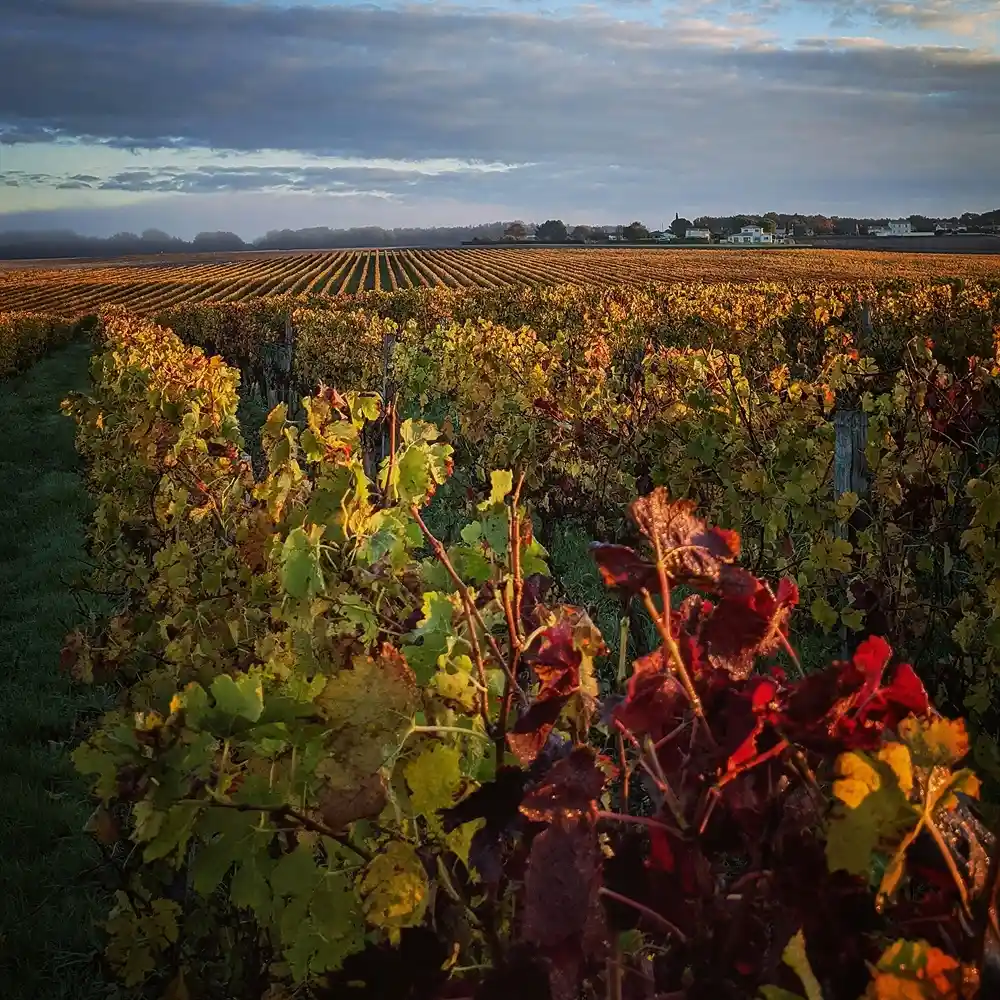
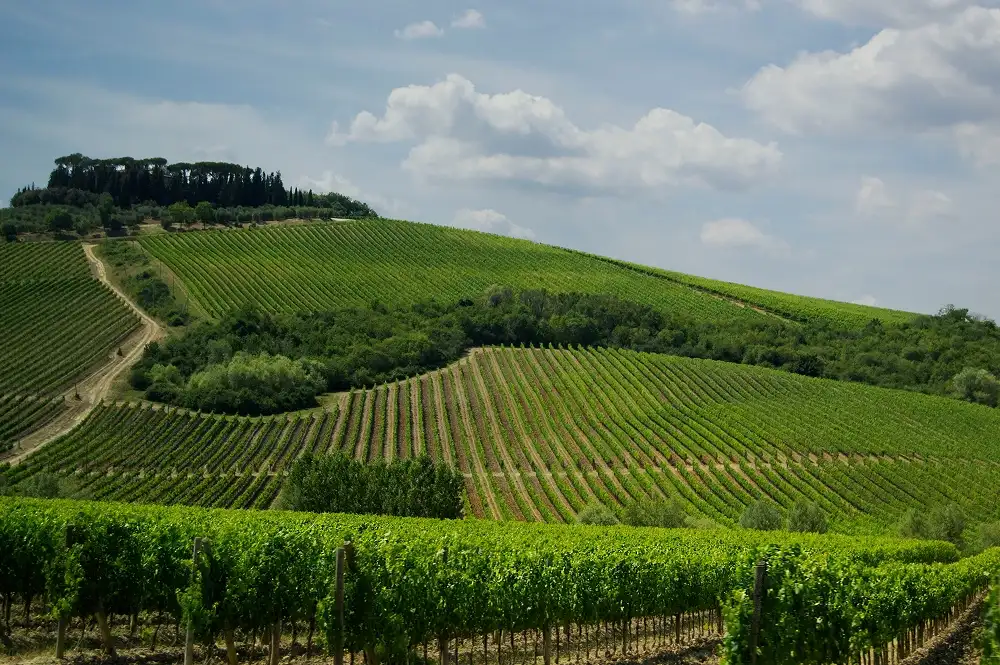
FAQs Sparkling wine
Which sparkling wine is sweet?
If you enjoy sweeter sparkling wines, Moscato d’Asti and Asti Spumante are top picks. These Italian sparkling wines are sweet, light, fruity and aromatic, ideal for dessert or casual sipping. When browsing, check for terms like “Demi-Sec” or “Sweet” on the label. These indicate a higher sugar content and ensure a smooth and sweeter drinking experience.
What is traditional sparkling wine?
Traditional sparkling wines are crafted using the classic method, or méthode traditionnelle, where the second fermentation takes place in the bottle. This process produces elegant, long lasting bubbles and adds complexity. Champagne, Cava and Franciacorta are standout examples of this technique, known for their refinement, structure and aging potential.
Is Prosecco a sparkling wine?
Yes! Prosecco is a sparkling wine from Italy’s Veneto region, primarily made from the Glera grape. Unlike Champagne, it’s crafted using the Charmat method where the second fermentation happens in stainless steel tanks. This results in light and fresh bubbles, ideal for a casual sparkling wine experience that’s perfect any time.
What is the difference between Champagne and sparkling wine?
All Champagne is sparkling wine but not all sparkling wine is Champagne. Champagne must come only from France’s Champagne region and follow strict traditional methods. Winesmakers outside the Champagne regions are not allowed to label their productions as Champagne. Other sparkling wines (like Prosecco from Italy or Cava from Spain) use different grapes and techniques. Each offers its own character but only Champagne holds the name and prestige.
How to open sparkling wine?
Start by chilling the bottle thoroughly. Remove the foil and loosen the wire cage while keeping a firm grip on the cork. Hold the bottle at a 45 degree angle and twist the base (not the cork!) gently. Let the pressure ease the cork out slowly for a soft release. Skip the dramatic pop unless you’re celebrating big!
Is sparkling wine and Champagne the same?
Not quite. Champagne is a specific sparkling wine made in France’s Champagne region using strict methods and select grape blends. Sparkling wine is the broader category that includes all bubbly wines (Champagne, Prosecco, Cava and others) made around the world with different grapes and techniques. So, while all Champagne is sparkling wine,not all sparkling wine is Champagne.
Does sparkling wine expire?
Sparkling wine doesn’t last forever. Non vintage bottles should be enjoyed within 1-2 years, while vintage or premium bottles may age for 5-30 years (especially for Champagne) if stored properly. Over time, both bubbles and flavor fade. For the best experience, enjoy your sparkling wine relatively young while it still has its vibrant character and freshness.
Does sparkling wine go bad after opening?
Yes, sparkling wine can go bad,after opening. Once opened, it loses its bubbles quickly, typically within 1-3 days. Even unopened bottles can spoil if stored improperly. To keep your bubbly fresh, store it in a cool and dark place with a consistent temperature, and always reseal opened bottles tightly.
What is the sweetest sparkling wine?
Moscato d’Asti and Asti Spumante are top sweet sparkling wines. Light and aromatic with low alcohol they’re perfect to consume with or replace dessert or casual sipping. Look for labels like “Doux” “if the bottle is French, “Dolce” if Italian or “Sweet” to find sweeter bubbly options that offer fruity and fragrant flavors with a refreshing finish, ideal for those who prefer sweetness.
How long does sparkling wine age?
Unopened sparkling wines are best enjoyed within 1-2 years, while vintage or traditional method bottles (i.e. those for which the Champenoise method was used) can age up to 30 years. Non vintage bottles are best consumed between 4 and 5 years while vintage years evolve gracefully for 10 to 20 years. Some prestige top tier cuvées such as Dom Pérignon or Cristal with extended lees aging can develop beautifully even after 40-50 years with perfect storage conditions. Key factors in aging include the winemaking style, the quality of the vintage and above all the storage conditions. After opening, consume within 1-3 days for optimal freshness. Keep the bottle chilled and sealed tightly to preserve bubbles and maintain the wine’s vibrant character as long as possible.
Is sparkling wine alcoholic?
Absolutely! Sparkling wines generally have an alcohol content between 11% and 13%. Some lighter styles such as Moscato can have lower levels around 5% to 7%. To be certain about the alcohol percentage before pouring, always check the label. This helps you select the right sparkling wine for your preference and occasion.
